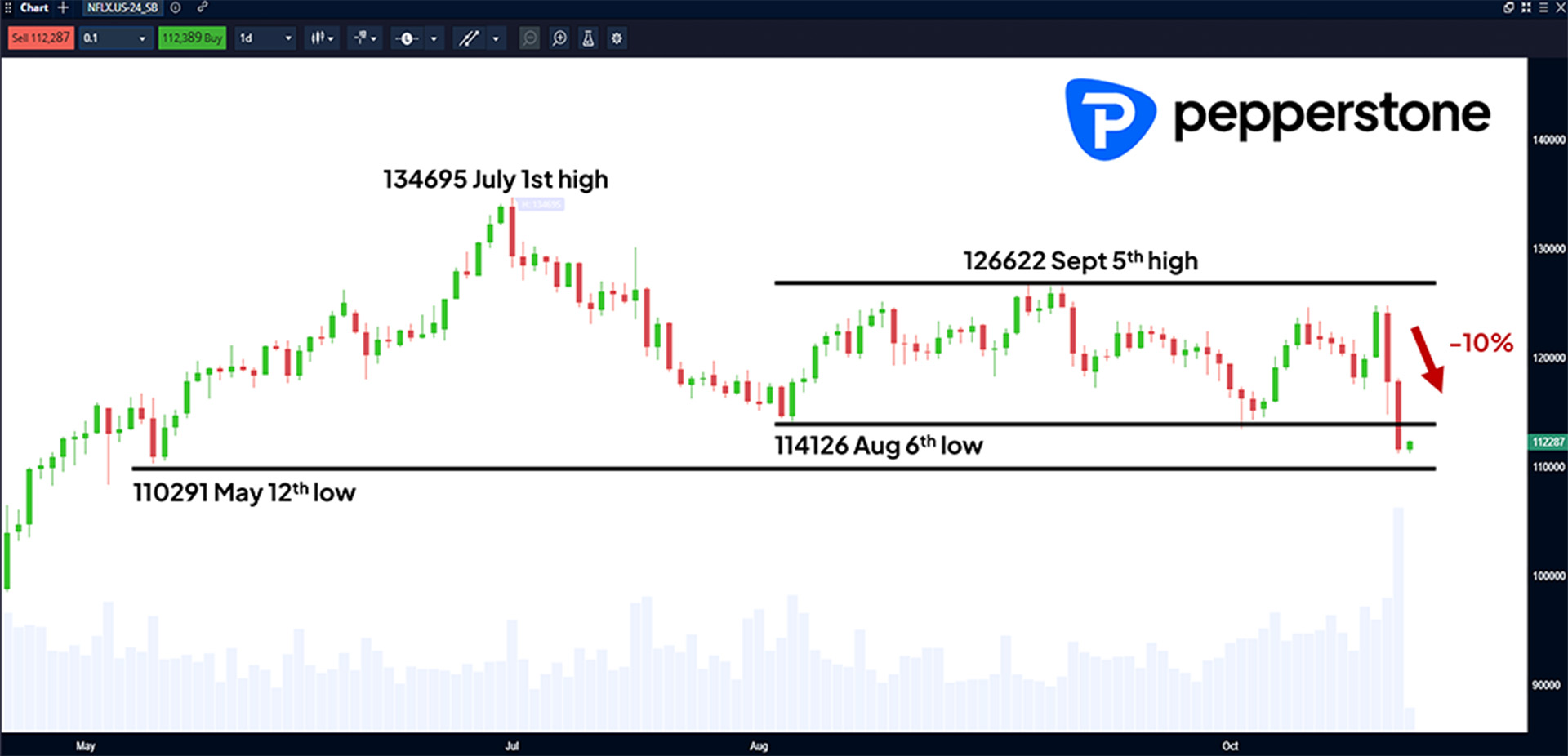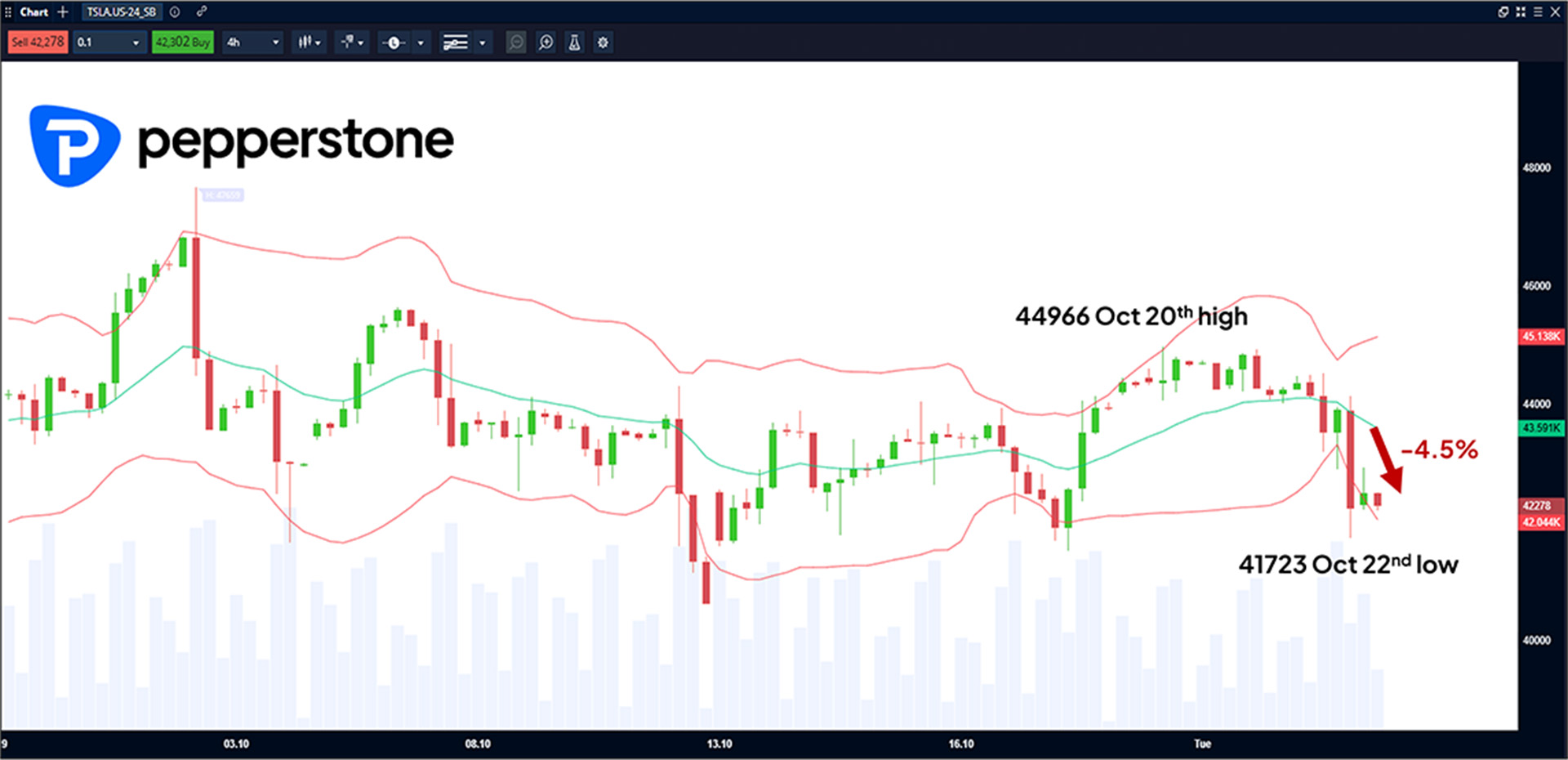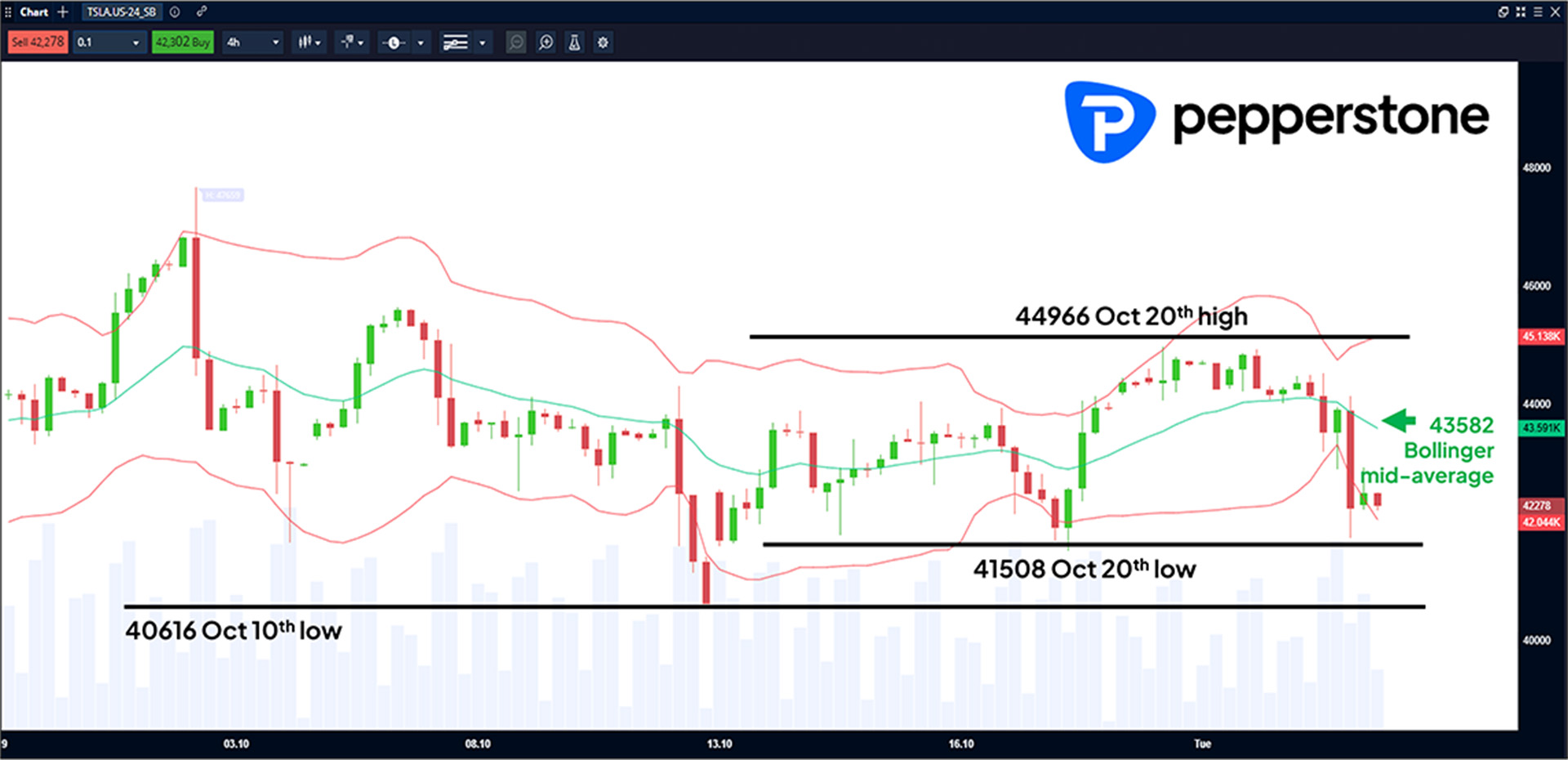Spread bets and CFDs are complex instruments and come with a high risk of losing money rapidly due to leverage. 72% of retail investor accounts lose money when trading spread bets and CFDs with this provider. You should consider whether you understand how spread bets and CFDs work, and whether you can afford to take the high risk of losing your money.
- English (UK)
Netflix plunges 10% and Tesla falls 4.5% after Q3 earnings miss expectations

.jpeg)
Summary
- Netflix slumps 10% after a $610m tax settlement with Brazil hits quarterly profit by $400m.
- Tesla drops 4.5% as rising costs offset record vehicle sales in Q3.
- Trader focus shifts to next week’s Magnificent Seven earnings, with AI-related revenue and spending under scrutiny.
Netflix and Tesla Q3 results disappoint adding to trader earnings angst ahead of the bulk of Magnificent seven reporting next week.
What’s driving the volatility this earnings season?
US Q3 corporate earnings season has started with a bang. Last week strong results from the major US banks were overshadowed by comments from Jamie Dimon, head of the financial services powerhouse JP Morgan when he discussed issues related to private credit, which preceded a brief sell off in banking stocks when 2 US regional banks flagged issues related to bad loans. The sentiment wobble was brief but did highlight trader sensitivity to earnings in this current environment.
Why did Netflix shares tumble 10% despite meeting expectations elsewhere?
On Tuesday, Netflix reported an operating profit $400 million below analyst estimates after it had to settle a tax dispute of $610 million with Brazilian authorities dating back to 2022 leading to a slump of 10% in its share price. While other Netflix earnings metrics were broadly in line with expectations the share price drop emphasises how traders are ready to punish individual companies when faced with the reality of disappointment versus lofty expectations.
Key technical levels - Daily chart NFLX.US-24:

Can Netflix hold key support or is more downside ahead?
Since reaching a record high on July 1st at 134695, the Netflix share price has been trading in a sideways range between a low from August 6th at 114126 and a high of 126622 from September 5th (see chart above). The drop in the last 2 days has seen it close below those range lows at 114126, opening the possibility of further downside towards the next potential key support at 110291, which is the low from May 12th.
What caused Tesla’s 4.5% drop after a record sales quarter?
Last night, Tesla released its earnings, the first of the Magnificent Seven mega corporations to do so, and again traders did not hold back in their response.

With adjusted earnings per share 50 cents versus analyst expectations of 54 cents, Tesla shares dropped 4.5% to a 6-day low of 41723 (see chart above). While the company reported a record quarter of vehicle sales any positivity was undermined by rising costs, with President Trump’s tariffs alone estimated to have cost the company around $400 million. Even a presentation from Elon Musk about the potential revenue to be generated from robots, self-driving technology and AI still failed to stir investor risk appetite.
Key technical levels - 4 Hour Chart TSLA.US-24:

Will Tesla find support or face more pressure?
Looking at the shorter term 4-hour chart above, the recent drop in the Tesla share price has taken it below the falling Bollinger mid-average, which is currently at 43582. With the upper and lower Bollinger bands widening to reflect the possibility of further short-term volatility ahead traders may need to tread cautiously.
Potential Support: 41508 (Oct 20th low) then 40616 (Oct 10th low)
Potential Resistance: 43582 (Mid-average) then 44966 (Oct 20th high)
What’s next for the Magnificent Seven earnings line-up?
The sell off in Netflix and Tesla shares may serve as an important wake up call to remind traders that a lot is riding on this Q3 earnings season, especially with sentiment fragile and prone to quick sharp changes.
Next week takes on even more significance with earnings updates from Alphabet, Microsoft and Meta next Wednesday (after the close) and Amazon and Apple on Thursday (after the close).
These results could prove pivotal for the direction of these individual companies but all US major stock indices moving forward into November. Trader sensitivity to AI spending and related revenue as well as actual earnings when judged against high expectations, could serve up an extra dose of market volatility to end October.
The material provided here has not been prepared in accordance with legal requirements designed to promote the independence of investment research and as such is considered to be a marketing communication. Whilst it is not subject to any prohibition on dealing ahead of the dissemination of investment research we will not seek to take any advantage before providing it to our clients.
Pepperstone doesn’t represent that the material provided here is accurate, current or complete, and therefore shouldn’t be relied upon as such. The information, whether from a third party or not, isn’t to be considered as a recommendation; or an offer to buy or sell; or the solicitation of an offer to buy or sell any security, financial product or instrument; or to participate in any particular trading strategy. It does not take into account readers’ financial situation or investment objectives. We advise any readers of this content to seek their own advice. Without the approval of Pepperstone, reproduction or redistribution of this information isn’t permitted.